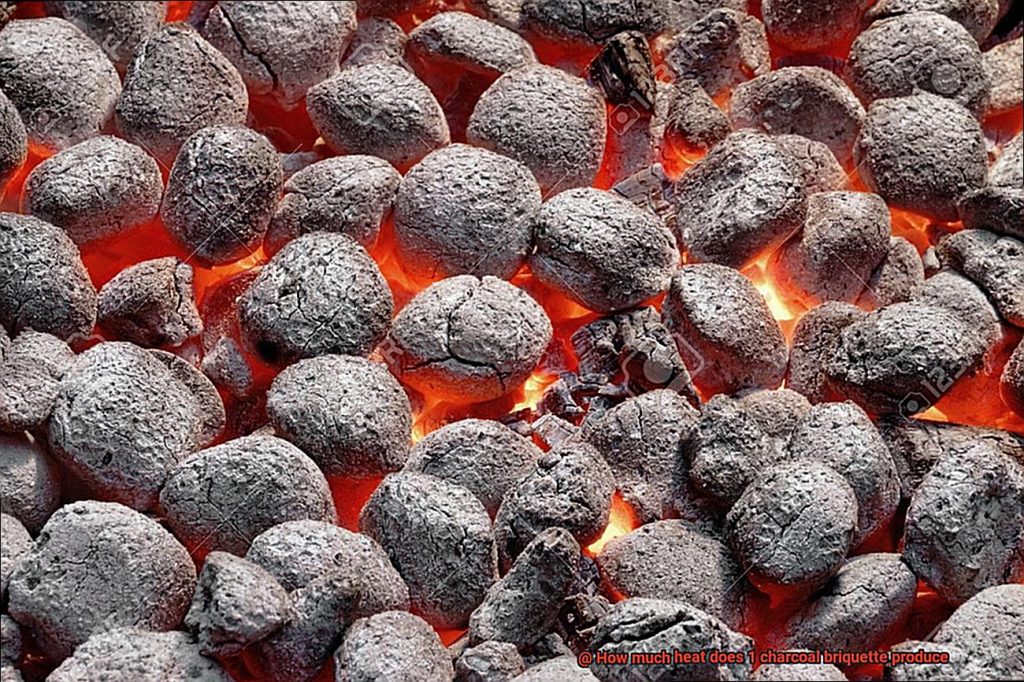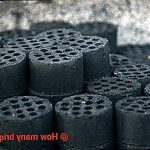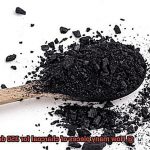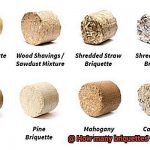Charcoal has been a staple fuel source for centuries, used by cultures worldwide for cooking and heating. It’s versatile and provides an excellent source of heat, making it ideal for outdoor grills, smokers, and camping stoves. But have you ever wondered how much heat a single charcoal briquette can produce? If so, you’re not alone.
The process of burning charcoal is complex and involves the production of carbon monoxide and carbon dioxide gases that burn with a mesmerizing blue flame. The amount of heat produced by a single charcoal briquette depends on several factors, including its size, density, and composition.
Charcoal briquettes come in different sizes – small, medium, and large – each producing varying degrees of heat. The larger the briquette, the more heat it produces. Density also plays a crucial role in determining the amount of heat produced as denser briquettes produce more heat than lighter ones. Additionally, the composition of the briquette affects its heat production; those made from high-quality materials like hardwood produce more heat than those made from lower quality materials.
In this blog post, we’ll explore the different factors that determine how much heat a single charcoal briquette can produce in detail. We’ll delve deeper into the science behind combustion and various measurements of heat to satisfy your curiosity about this age-old fuel source. So whether you’re an avid camper or a BBQ enthusiast looking to up your game or just want to learn something new today – sit tight because we’re about to unravel the mysteries behind charcoal’s impressive heat production.
Contents [show]
What is a Charcoal Briquette?
These compressed blocks made from charcoal dust, wood chips, sawdust, and other organic materials are a popular fuel source for grilling and barbecuing. Charcoal briquettes are known for providing a consistent and predictable source of heat that is easy to control, making them a go-to for backyard barbecues and outdoor gatherings.
To create these uniform blocks of fuel, charcoal dust is mixed with a binder such as cornstarch or flour before being compressed into shape using a mold. The mixture is then dried and heated to remove any moisture and activate the charcoal. Charcoal briquettes come in various shapes, sizes, and brands with some designed for specific types of cooking such as high-heat grilling or low-and-slow smoking.
The size of a charcoal briquette can affect its heat output, with larger ones typically producing more heat than smaller ones. The composition of the briquette also plays a role in how much heat it produces. Briquettes made from higher quality ingredients that are more densely packed will usually produce more heat than those made from lower quality materials.
The type of wood used to make the charcoal can impact its heat output as well. Hardwoods like oak and hickory tend to burn hotter and longer than softwoods like pine or spruce. Charcoal made from hardwoods will usually produce more heat per briquette than those made from softwoods.
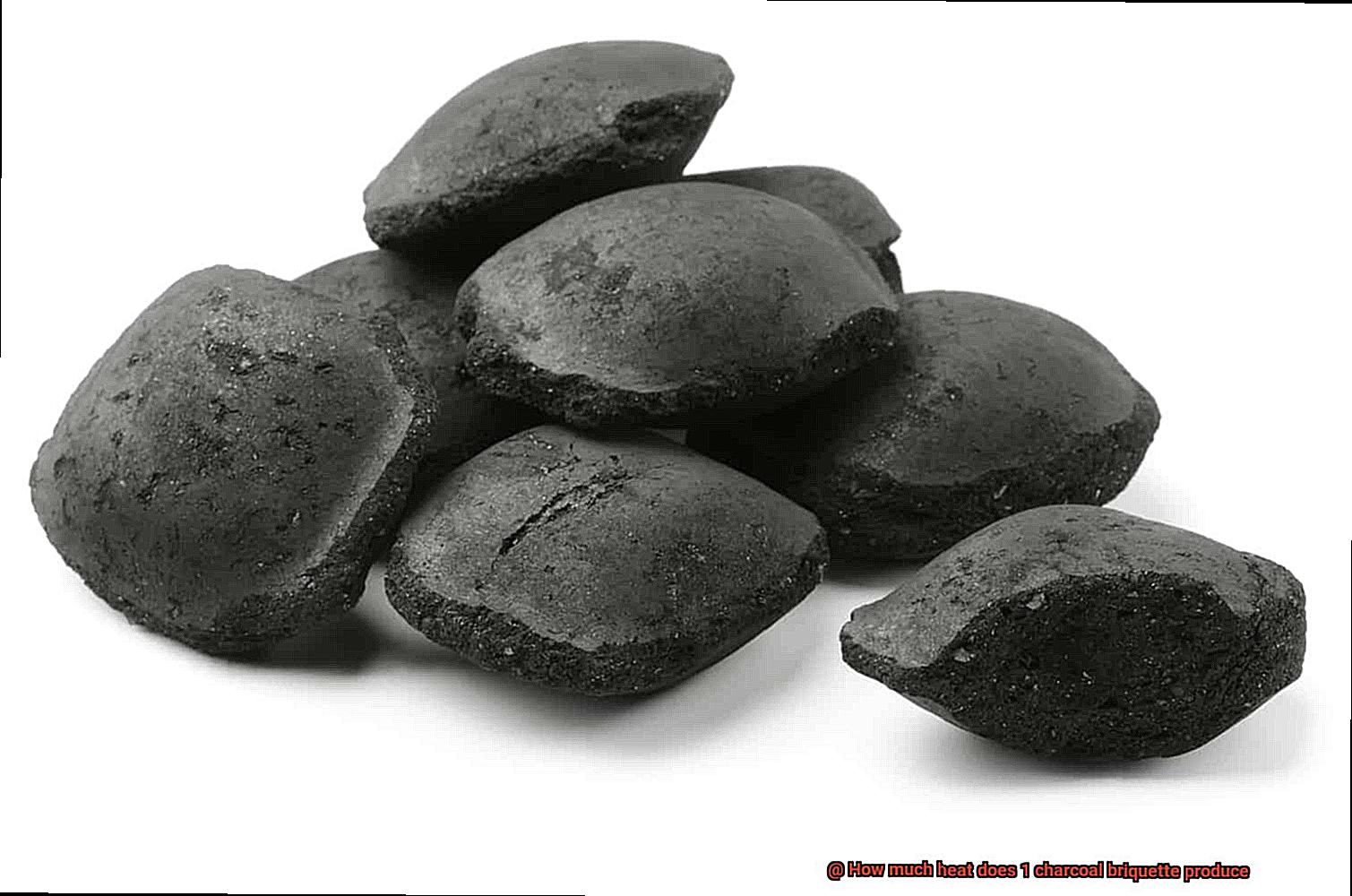
Additionally, some charcoal briquettes are infused with flavors such as mesquite, hickory, or applewood to enhance the taste of the food being cooked. However, it is important to note that the method of lighting the charcoal can also affect its heat output. Charcoal that is lit using lighter fluid or other accelerants may burn hotter initially but will often burn out faster, producing less overall heat than charcoal that is lit naturally using a chimney starter or other methods.
Factors Affecting Heat Output of Charcoal Briquettes
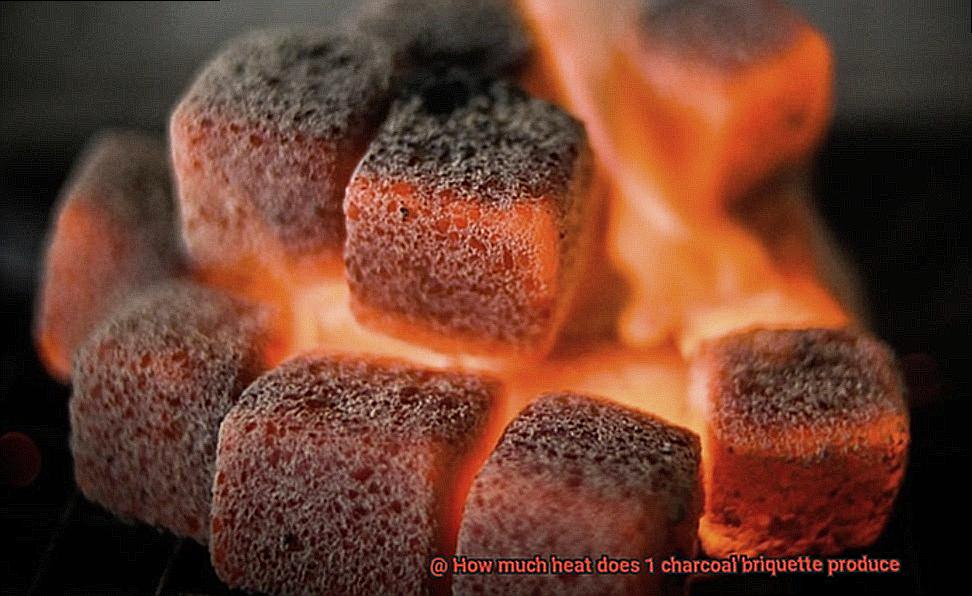
Grilling is an age-old tradition that involves the perfect combination of heat, seasoning, and patience. However, the success of your grilling endeavor largely depends on the heat output of your charcoal briquettes. The heat produced by one charcoal briquette depends on various factors, and understanding these factors can help you make an informed decision about the type and quantity of charcoal briquettes you need for your grill.
One of the most significant factors that affect the heat output of charcoal briquettes is their quality. High-quality charcoal briquettes made from pure hardwood with no additives or fillers burn hotter and longer than cheaper alternatives. Investing in high-quality charcoal briquettes can significantly enhance the heat output of your grill, providing you with a more efficient and consistent grilling experience.
In addition to quality, the size of charcoal briquettes also plays a crucial role in determining their heat output. Larger charcoal briquettes produce more heat than smaller ones because they burn slower and release a consistent amount of heat over a longer period. Therefore, if you want to achieve a higher heat output, consider using larger-sized charcoal briquettes.
The shape of charcoal briquettes also influences their heat output. Square-shaped charcoal briquettes have more edges and corners, which allow for better airflow and a more consistent burn. On the other hand, round or irregularly shaped charcoal briquettes tend to burn unevenly and produce less heat.
Finally, the ventilation system in your grill affects the heat output of your charcoal briquettes. A well-ventilated grill allows for better airflow, which helps maintain a consistent temperature throughout the cooking process. Proper ventilation ensures maximum heat output of your charcoal briquettes.
Size of Charcoal Briquettes
While most charcoal briquettes are about 2 inches in diameter and 1 inch thick, there are variations to consider. Some manufacturers offer larger briquettes that can be up to 3 or 4 inches in diameter. These bigger briquettes are perfect for longer cooking times or for use in larger grills and smokers. They burn longer and produce more heat, making them a great choice for those big backyard BBQs.
On the other hand, smaller charcoal briquettes may be better suited for shorter cooking times or for use in smaller grills. These tiny but mighty briquettes produce a higher heat output per pound of charcoal, making them a more efficient option.
But, let’s not forget that size is just one factor that affects heat output. The quality of the charcoal and the amount of air flow in the grill or smoker are also important factors to consider. Investing in high-quality hardwood charcoal briquettes with a well-ventilated grill will help you achieve maximum heat output for a more efficient and consistent grilling experience.
When it comes down to it, choosing the right size of charcoal briquette depends on your specific needs and cooking preferences. Are you planning on grilling for a short amount of time or all day? Do you have a large or small grill? These are all things to consider when selecting the perfect charcoal briquette size.
Composition of Charcoal Briquettes
The primary ingredient in charcoal briquettes is charcoal, made by burning wood in an oxygen-deprived environment to remove impurities and yield pure carbon. But it doesn’t end there. Binders and fillers are added to give the briquettes their shape and regulate their burn rate.
Binders, typically starches or clays, hold the briquettes together and ensure they burn evenly. Fillers like limestone or sawdust control the burn rate and provide a consistent heat output. Different brands and manufacturers may use various types of wood, binders, or fillers to achieve specific properties in their charcoal briquettes.
The composition of charcoal briquettes plays a crucial role in determining their heat output. The balance between charcoal, binders, and fillers can affect how much heat each briquette produces. Too much binder can cause the briquettes to burn too quickly and produce less heat, while too much filler can result in a longer burn time but a lower heat output.
When selecting charcoal briquettes for your next grilling adventure, keep in mind that their composition varies between brands and types. Consider your needs – whether you want a longer burn time or higher heat output – when making your choice.
It’s crucial to understand the composition of your charcoal briquettes to achieve optimal grilling results. But don’t forget other factors like size, quality, and air flow also play a role in this equation. By knowing all these elements, you will be well on your way to enjoying unforgettable grilling experiences with your loved ones.
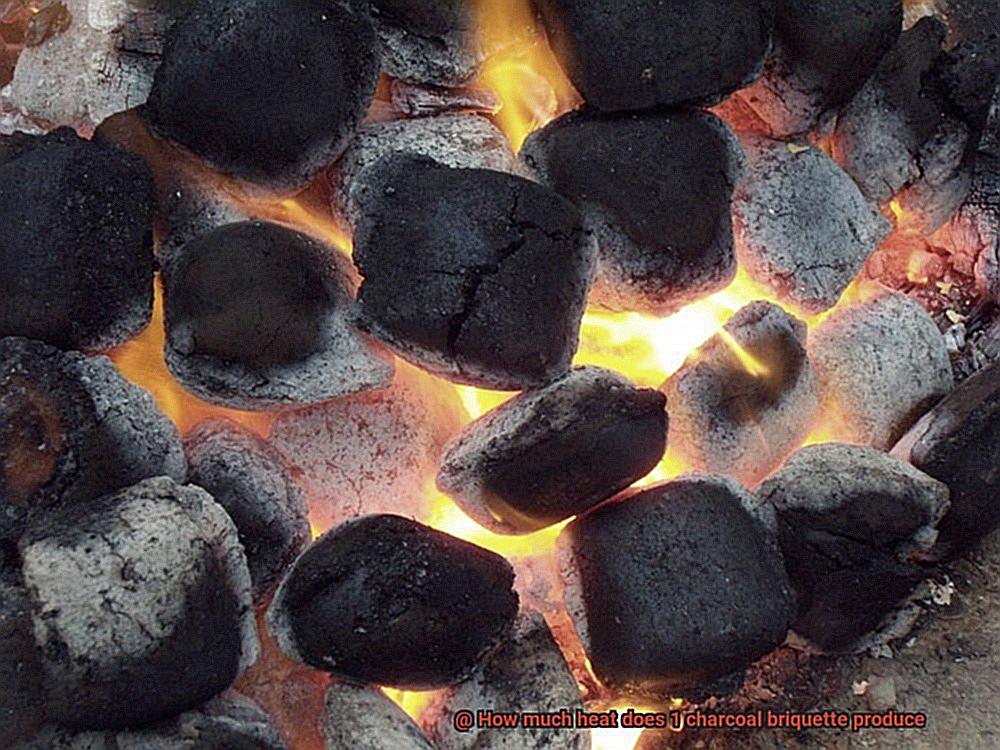
Type of Wood Used to Make the Charcoal
Firstly, let’s talk about the go-to woods for charcoal production: oak, hickory, and maple. These hardwoods are favored for their high density and ability to produce a consistent heat for an extended period. This means less time spent adding more charcoal and more time spent enjoying your perfectly grilled food.
But don’t stop there. Other woods like mesquite, cherry, and applewood can produce a distinct flavor that is sure to take your grilling game to the next level. However, keep in mind that these woods may not generate as much heat or burn as consistently as the hardwoods. So, if you’re looking for a unique taste experience, it’s worth trying out charcoal briquettes made from these woods.
It’s important to note that some charcoal briquette brands add fillers like sawdust or coal dust to help bind the briquettes together. While this can affect the heat output and consistency of the charcoal, it also reduces waste and makes the briquettes more affordable.
Method of Lighting the Charcoal
Then let’s talk about the all-important step of lighting the charcoal.
There are various ways to start charcoal, including lighter fluid, electric starters, natural fire starters, and the chimney starter method. While each method has its advantages and disadvantages, using a chimney starter is the most effective way to maximize heat output and achieve consistent cooking temperatures.
So why is the chimney starter method so great? Here are some benefits:
- Even Heating: With a chimney starter, every briquette is heated evenly, ensuring consistent heat output and eliminating hotspots on the grill. Say goodbye to undercooked or overcooked food.
- Quick and Easy: The chimney starter method is straightforward and doesn’t require any special skills or equipment. All you need is a chimney starter, crumpled newspaper, and charcoal.
- No Chemicals: Unlike lighter fluid or other chemical-based starters, a chimney starter doesn’t affect the taste of your food. It’s an all-natural way to light your charcoal, making for a healthier and tastier BBQ experience.
- Safety: Using a chimney starter is much safer than other methods like lighter fluid, which can be dangerous if not used correctly. Always follow safety precautions when using any lighting method and never leave your grill unattended while it’s lit.
Conclusion
Charcoal briquettes have been a go-to fuel source for centuries, delivering a reliable and efficient heat source for cooking and heating. But how much heat does one charcoal briquette produce? The answer is not straightforward.
Several factors determine the amount of heat produced by a single briquette, including its size, density, composition, and lighting method. Larger charcoal briquettes generally generate more heat than their smaller counterparts. Moreover, the composition of the briquette plays a crucial role in determining its heat output. High-quality hardwood charcoal made from oak or hickory produces more heat than those made from inferior materials.
The type of wood used to make the charcoal also affects its heat output. While mesquite or applewood can add distinct flavors to food, they may not generate as much heat or burn as consistently as hardwoods.
It’s worth noting that the way you light your charcoal can impact its heat production too. Using a chimney starter is the most effective way to achieve consistent cooking temperatures while maximizing heat output. It’s quick, easy, all-natural, and safe.
To sum up, understanding these factors will help you make an informed decision about the type and quantity of charcoal briquettes needed for your grill or smoker.

